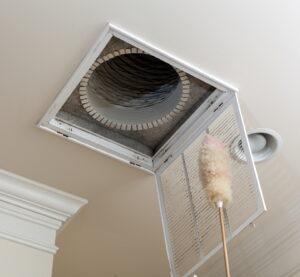Indoor air quality plays a crucial role in your health and overall comfort at home. Yet, many homeowners remain unaware of the early warning signs that their indoor air is filled with pollutants. Poor IAQ can lead to various health problems, reduce the efficiency of your HVAC system, and even damage your home. Identifying the signs of poor indoor air quality early can help protect your family and improve your living environment. Below are some key indicators that your home’s air may need improvement.
1. Increased Allergies or Respiratory Issues
One of the most common signs of poor indoor air quality is the sudden onset of allergy symptoms or respiratory issues. If you or a family member experience more frequent sneezing, coughing, itchy eyes, or a runny nose inside your home, it could be due to high levels of allergens such as dust, pollen, or pet dander in the air. Additionally, poor air quality can exacerbate existing conditions like asthma or bronchitis.
2. Excessive Dust Build-Up
While some dust is inevitable in any home, a significant build-up of dust around vents, on surfaces, or in areas that are typically clean may be a sign that your HVAC system is circulating contaminated air. This could indicate the need for duct cleaning, as dust and other particles may be getting trapped and recirculated through your air ducts, worsening indoor air quality.
3. Mold or Musty Odors
A musty smell in your home is a tell-tale sign that mold could be present. Mold growth often results from excessive humidity, water leaks, or condensation, and it can release harmful spores into the air. These spores can trigger allergic reactions and respiratory problems, making it vital to address mold issues immediately. A proper inspection and duct cleaning can help eliminate mold from your HVAC system, reducing its spread throughout your home.
4. Unexplained Fatigue or Headaches
If you’ve noticed unexplained fatigue, headaches, or dizziness while at home, poor indoor air quality could be to blame. Air pollutants such as volatile organic compounds (VOCs) emitted from household products like paint, cleaning supplies, and new furniture can contribute to these symptoms. VOCs can accumulate indoors without proper ventilation, leading to a variety of health problems over time.
5. Excess Humidity or Dryness
Balancing humidity levels is essential for maintaining good air quality. If the air in your home feels excessively dry, it can lead to irritated skin and respiratory problems. On the other hand, excessive humidity encourages the growth of mold and mildew, which can severely impact air quality. Investing in a humidifier or dehumidifier can help regulate humidity levels and improve your home’s air quality.
6. Frequent HVAC System Issues
If your HVAC system is experiencing frequent breakdowns or reduced efficiency, it could be due to dirty or clogged air ducts. Contaminants like dust, pollen, and pet dander can clog your system, making it harder to maintain temperature control. This not only affects your indoor air quality but can also lead to higher energy bills and more frequent repairs. Professional duct cleaning can resolve these issues by clearing out the contaminants that may be causing HVAC problems.
Maintaining healthy indoor air quality is essential for your family’s health and comfort. If you’ve noticed any of these warning signs, it’s time to take action. From increased allergy symptoms to moldy odors, poor indoor air can affect your quality of life. Regular HVAC maintenance, including duct cleaning in Hattiesburg, MS, can drastically improve your home’s air quality, making your living space cleaner and healthier.
Schedule service at your earliest convenience with AirSouth Cooling and Heating.








